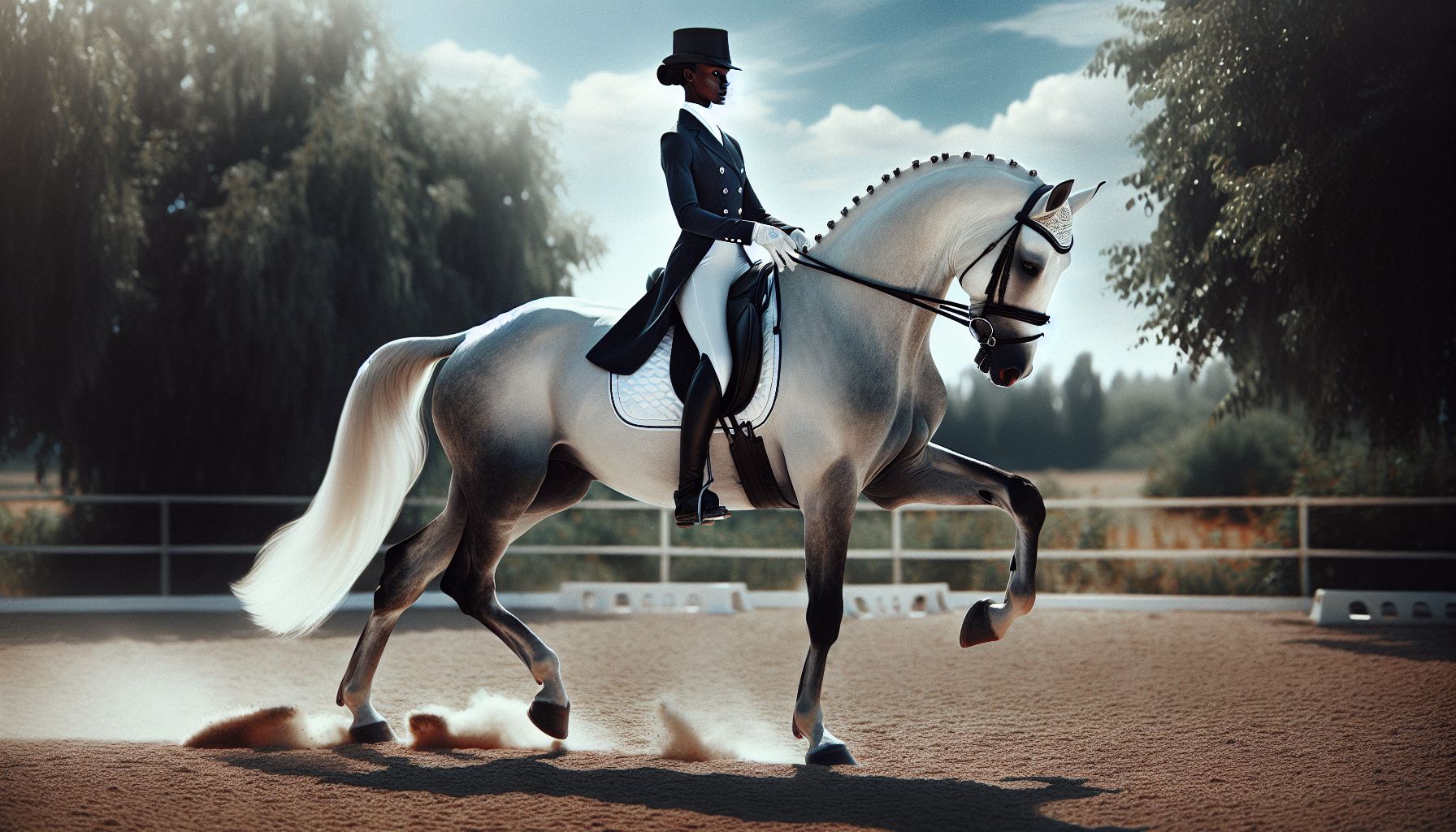Photo: Unsplash
Are you familiar with the art of dressage? The word itself may sound foreign, almost like a fancy dance move at a formal gathering. Well, in a way, it is! Dressage is an equestrian sport that showcases the harmonious unity between rider and horse, with their movements flowing gracefully and effortlessly. In this article, we will delve into the captivating world of dressage, exploring its origins, its key principles, and the beauty it brings to both horse and rider alike.
The Art of Dressage: An Introduction
Dressage traces its roots back to ancient Greece, where horse training was considered an essential part of military preparation. The word “dressage” comes from the French word for “training.” Over time, dressage evolved into an elegant display of discipline, precision, and artistry. Today, it is recognized as one of the three equestrian disciplines in the Summer Olympic Games.
To put it simply, dressage involves a horse and its rider performing a series of predetermined movements. These movements are the result of years of training, fostering a deep connection between the rider and their equine partner. The aim of dressage is to cultivate the horse’s natural abilities through systematic training, enhancing their agility, flexibility, and responsiveness.
The Principles of Dressage
Dressage can be likened to a ballet performance, with the horse and rider working together to create a seamless and harmonious display. There are several key principles that underpin the discipline of dressage:
Collection
Collection is one of the fundamental concepts in dressage. It refers to the horse’s ability to engage its hindquarters and lift its back, resulting in a light and powerful movement. Achieving collection requires proper training and conditioning, as well as the development of the horse’s strength and balance.
Suppleness
Suppleness is the horse’s ability to move smoothly and fluidly, responding to the rider’s cues with ease. This quality is crucial for executing dressage movements precisely and gracefully. Suppleness is achieved through progressive training, including exercises that promote flexibility, relaxation, and balance.
Impulsion
Impulsion refers to the energy and propulsion that the horse generates from its hindquarters. It is the driving force behind the horse’s movements in dressage. A horse with good impulsion will have an expressive and powerful trot and canter, showing a willingness to perform and engage.
Straightness
Straightness is essential in dressage, as it ensures the horse’s balance and alignment with the rider. A straight horse moves evenly forward with symmetrical bends and flexion in both directions. It requires the rider’s mastery of subtle aids and effective communication.
Harmony
Above all, dressage aims to create harmony between the horse and the rider. It is the ultimate goal, where two beings move together as one. Achieving harmony requires patience, trust, and a deep understanding of each other’s strengths and limitations.
Levels of Dressage
Dressage is divided into different levels to provide a progressive framework for training. Each level introduces new movements and challenges as the horse and rider partnership develops. The levels range from introductory tests for beginners to the highly demanding Grand Prix tests for elite athletes.
The Magic of Dressage: The Beauty of Horse and Rider in Perfect Harmony
Watching a dressage performance is truly captivating. The finesse and grace expressed by the horse and rider as they move as one are nothing short of magical. The horse’s strength and athleticism complemented by the rider’s subtle cues and guidance create a harmonious spectacle that is both awe-inspiring and humbling.
Dressage is more than just a sport; it is a celebration of the connection between humans and animals. It requires an enormous amount of dedication, discipline, and years of training to achieve the level of mastery we witness in the dressage arena. The bond between the rider and horse is built on trust, respect, and a shared love for the art of dressage.
The Joy of Dressage: Can Anyone Do It?
You may be wondering if dressage is only for professional riders or those who have access to a competitive equestrian setting. The truth is, dressage is for anyone who has a passion for horses and a willingness to learn. While competitive dressage can be found at various levels, dressage training can also be enjoyed as a recreational activity or a means of deepening the bond between horse and rider.
Many riding schools and equestrian centers offer dressage lessons and training programs suitable for riders at every level. Whether you dream of competing in a dressage show or simply want to improve your riding skills, dressage offers an avenue for personal growth and connection with these magnificent animals.
Conclusion: Discover the Beauty of Dressage
Dressage is not just a sport; it is an art form that celebrates the relationship between horse and rider. It is elegance in motion, a display of harmony, balance, and precision. From its ancient origins to its place at the heart of the Olympic Games, dressage continues to captivate and inspire. Whether you are a seasoned rider or someone with a love for horses, witnessing the beauty of dressage is an experience that will leave you in awe, forever mesmerized by the magic that unfolds before your eyes.
